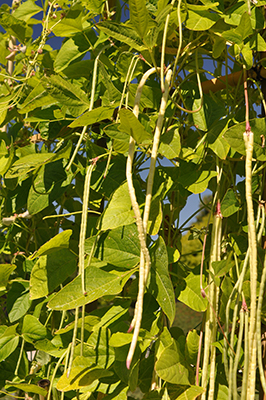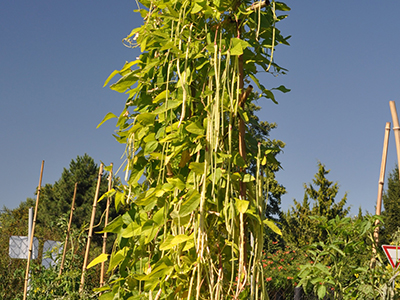Vigna sinensis L.



| ENG | Cowpea |
| SK | Vigna |
| CZ | Vigna |
| PL | |
| HU |
Taxonomic characteristic
Order: Fabales Family: Fabaceae, Tribe: Phaseoleae Genus: Vigna
Using
It is one of the most important tropical dual-purpose legumes, being used for vegetables (leaves and flowers can also be consumed), grain as fresh cut and carry forage, and for excellent hay and silage. The species has a high potential as a green manure. Estimates of fixed nitrogen from cowpea often range from about 50 to in excess of 100 kg/ha.
The leaves and seeds are applied to skin infections as a poultice, the leaves are chewed to relieve toothache and powdered carbonized seeds are applied to insect stings. The roots are used as treatment for epilepsy, chest pain, constipation and as an antidote to snakebites. Today, It is now grown worldwide, especially in the tropics. (but it can be produced in semi-arid regions and dry savannas too). The largest producers are Nigeria, Niger, Brazil, Haiti, India, Myanmar, Sri Lanka, Australia and the United States.
Botanical charakteristic
The plant is native to west Afrika.
Synonyms for Vigna sinensis are also Vingna catjang, Vigna unguiculata.
It is a climbing annual in the family Fabaceae grown for its edible seeds and pods. Some types are erect and trailing and other are climbing herbs up to 4 metres long. The plant has a well-developed taproot with many lateral roots extending from it. Leafs are positioned alternately along the stem and composed of three leaflets. The petiole, the appendage which holds the leaf is up to 15 cm long, and in some cases 25 cm long, grooved above and swollen at the base. Flowers are pink to purple, (sometimes white), papilionaceous and resemble for example the pea flower. Fruit are a cylindrical seed pod 8-30 cm long (in some cases 120 cm long), is pale brown when ripe and bears 8-30 seeds. The seeds are oblong to globose (spherical) 0.5-1 cm long and can be black, brown, pink or white.
Why to have the plant in your garden:
This species is one of the crop legumes most tolerant to drought conditions. The high protein content of cowpea makes it an excellent fodder crop. It has many medicinal properties.
Text:
Ing. Ján Farkaš, SUA, Nitra, Slovak Republic
Photo:
Dr. Ivana Mezeyová, SUA, Dr. Ján Mezey, Nitra, Slovak Republic
Links to scientific articles
http://www.tropicalforages.info/key/Forages/Media/Html/Vigna_unguiculata.htm
http://www.fao.org/ag/agp/AGPC/doc/gbase/data/pf000090.htm
https://plants.usda.gov/plantguide/pdf/pg_viun.pdf
http://www.kew.org/science-conservation/plants-fungi/vigna-unguiculata-cowpea

